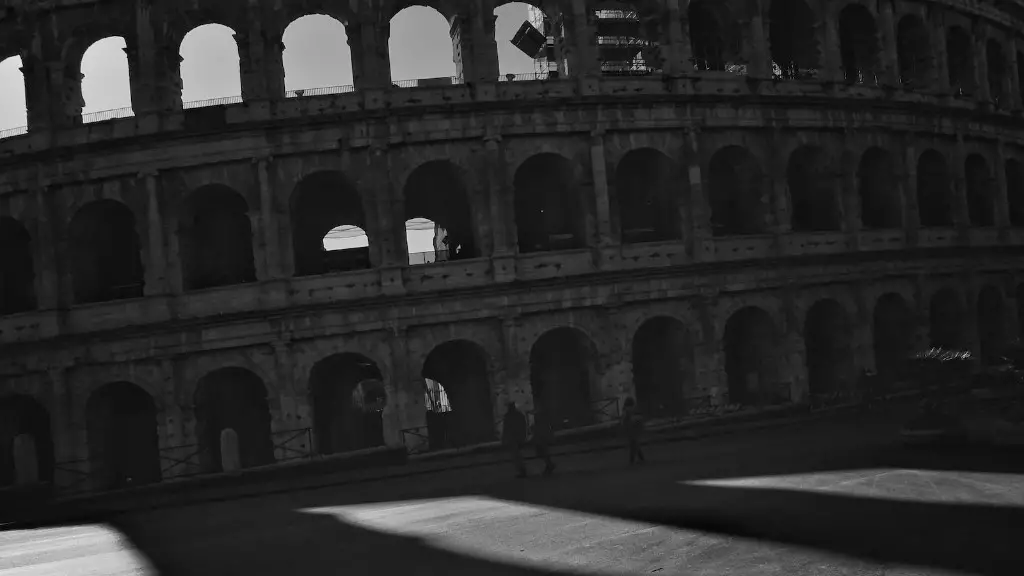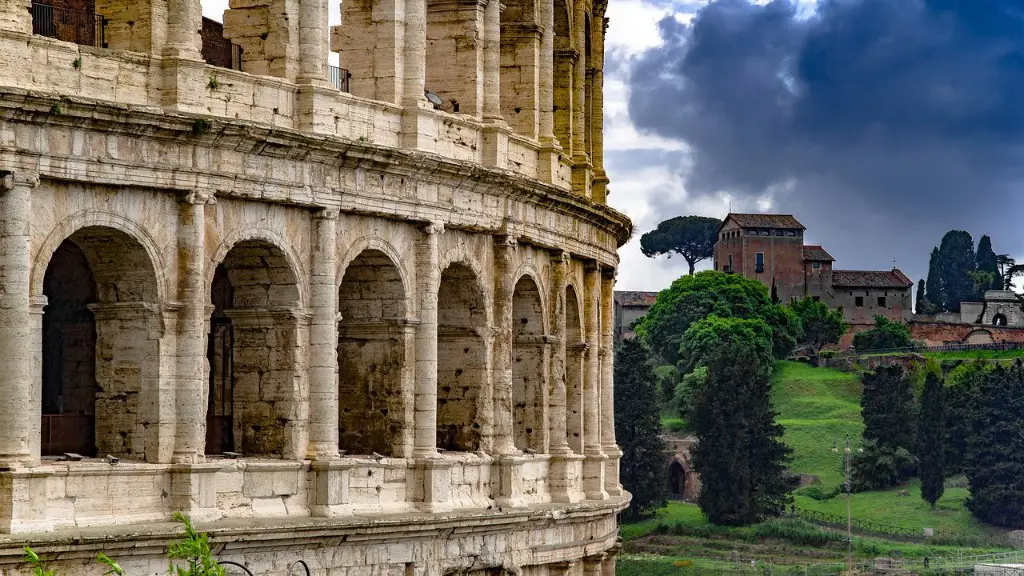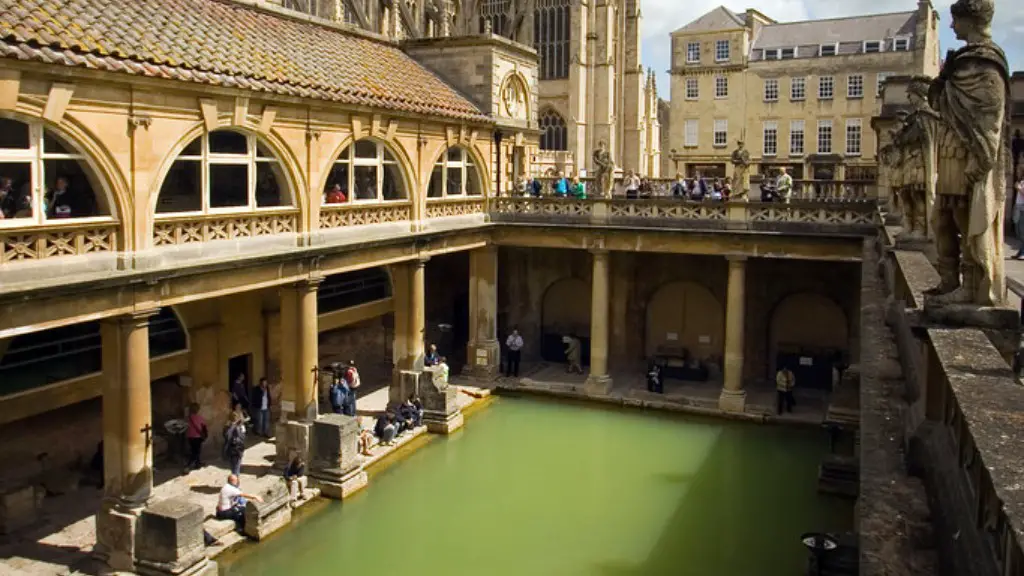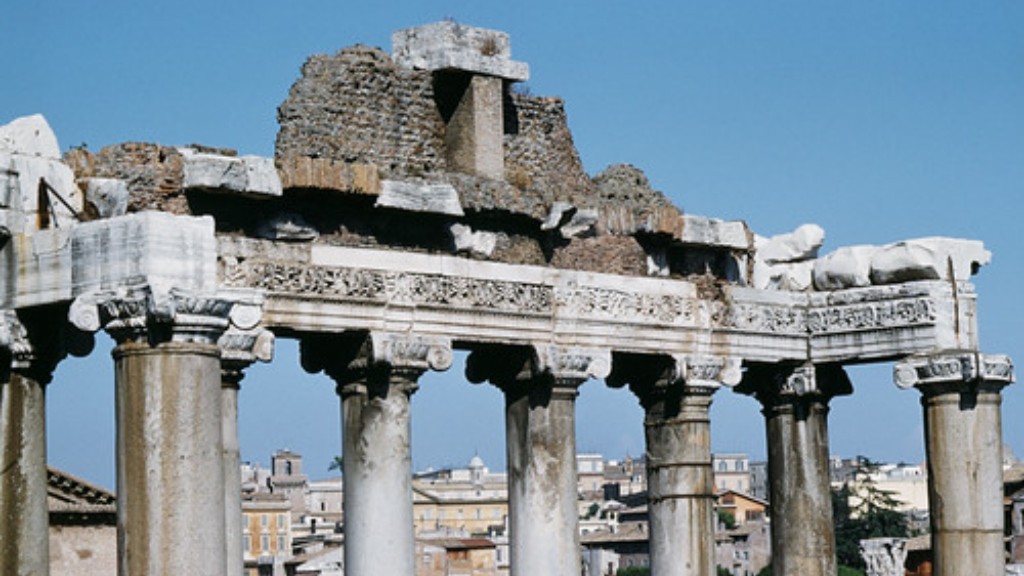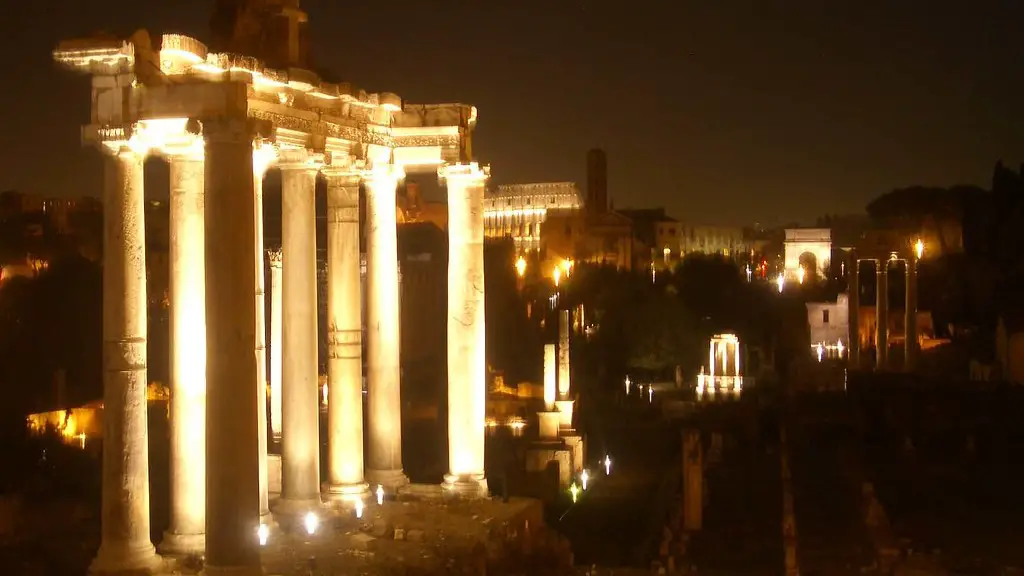The Roman Empire was a superpower of its time and, as such, its living standards were vastly superior to those of many of its contemporaries. Ancient Romans lived in a variety of homes, ranging from beautifully appointed villas to small tenements crammed with families and slaves. While homes were typically designed to reflect the relative wealth of the owner, there were certain unifying elements that formed the basis of all Roman homes.
The most common type of housing used by the Romans was the Insula, which was a multi-storey apartment block of between 3 and 5 stories. Insulas housed the vast majority of Roman citizens, though many of them were also used to house slaves. Typically, each floor of the Insula would have several individual apartments, ranging from small single-room dwellings to larger multi-room homes. The Insulas were often overcrowded and contained communal latrines and baths.
Wealthier Romans would have been able to afford to have their own villas, which were typically located in the outskirts of major cities. Villas were typically large, single-story homes, often with luxuries such as mosaics, baths, and gaming tables. They also had spacious gardens and usually contained several separate living areas, such as bedrooms, living rooms, and even kitchens.
Of course, not everyone could afford a villa, and some Romans opt to build shacks and hovels on the edges of cities. These were typically made of cheaply acquired materials and were overcrowded and generally unhealthy. Unfortunately, this type of shantytown housing was a common sight in ancient Rome and their inhabitants were often reviled by their wealthy neighbours.
Other less common forms of housing were also used in Rome. Wealthy patrons, such as Julius Caesar, could afford to build grand palaces, often containing several floors and sprawling gardens. Additionally, Roman military units would often camp out in open fields during campaigns, and in some cases, permanent camps would be constructed to house soldiers during periods of inactivity. Finally, during times of economic hardship, citizens would sometimes squat in abandoned buildings.
Status Houses
It was common for Roman homes to have a certain degree of status associated with them, with the villas of wealthier citizens being the most highly prized. Even in the world of Insulas, there were distinctions to be made between the success of the residents, and the wealthier or more powerful residents would be able to afford much larger and better furnished apartments than the poorer occupants.
Villas could often tell a great deal about the status of their owners. A wealthy family might choose to lavishly decorate its villa with imported materials and luxurious furniture. Similarly, patrons such as Julius Caesar were known to build grand palaces that were designed to reflect their immense power and wealth.
Extreme wealth could also be demonstrated by the construction of public monuments, such as the Colosseum, or by the giving of large sums of money to charity. Such displays of wealth were seen as being in keeping with the Roman ideal of living a life of luxury and self-indulgence.
At the other end of the social scale, many citizens were forced to make do with cramped and poorly furnished tenements. As such, even the poor in Rome could make distinctions between those who were doing relatively well and those who were doing less so. Such distinctions were seen as being necessary in order to prevent social unrest.
Bathhouses
Baths were an important part of life in ancient Rome and were a fundamental element of many of the Roman homes. Most Insulas, villas, and palaces would have had their own private baths, which typically consisted of an outer courtyard with a series of rooms containing pools and steam rooms. Generally, the larger and more extravagant a home’s baths, the more luxurious it was.
Baths were seen as a mark of luxury and status in Rome, and as such some of the wealthiest patrons chose to have elaborately decorated baths built in their homes. They were places where citizens could relax, socialize, and even compete with one another in athletic competitions. During times of public celebrations, many baths were filled with songs, music, and jubilant singing.
The poorer citizens of Rome would often make use of public baths, which were located in most major cities. Public baths were generally large, open courtyards with a single large pool in the middle, which could accommodate hundreds of people at once. While these public baths were often crowded and poorly maintained, they provided an important place where citizens could meet, socialize, and wash away the day’s exertions.
Materials and Construction
Most Roman homes were constructed from local materials, depending on what was available in the region. In wealthier areas and cities, many villas were constructed from marble and limestone, which could have had intricate carvings and patterns along their walls. For poorer citizens, more basic materials such as mud, wood, and straw were often used, with the latter being particularly common in the poorer districts.
The construction of many Roman homes followed a largely consistent pattern, with walls being built from the ground up and then topped with tiled roofs. Most villas, Insulas, and palaces also had multiple entrances, with a main entrance that was accessible only to residents or visitors, and a back entrance that staff and slaves used. To ensure the safety of their homes, Roman citizens also installed heavy wooden doors, which often featured metal bars and locks.
Architectural Differences
While the common elements of Roman housing could be seen across different regions, there were also variations in architectural styles between different parts of the Empire. In the East, for example, domes and arches were often found on the façades of homes, while in the West, flat roofs were more common for wealthier citizens’ homes. This difference in styles was largely due to the fact that many of the materials used to construct homes in the West were more basic than in the East.
That being said, there were also some similarities between different styles of construction in Rome. For example, many homes would have had porticos, which were open-air courtyards that served both as a place for relaxation and exercise. Alternatively, many homes in the East had colonnaded courtyards, which were used to cool off during the hot summer months.
The Decline of Roman Housing
As the Roman Empire began to decline, so too did the quality of the housing in many parts of the Empire. As resources became scarcer, Insulas and villas were often unable to be maintained or kept in a good state of repair, and many once grand palaces became dilapidated ruins. Additionally, with the growth of the Roman army, many homes were abandoned or destroyed by military units in search of resources or shelter.
Eventually, the decline of Roman housing reached a point where it became almost impossible to find good quality living quarters. As such, many citizens moved away from the cities and towns, finding shelter in rural areas or even in caves and other makeshift dwellings. Others were forced to live in overcrowded and poorly maintained Insulas and villas, often having to endure dangerous and unhealthy living conditions.
Legacy of Roman Housing
Despite the relative decline in standards of Roman housing, many of the features still remain today. For example, the vast majority of modern homes still use the same material and styles of construction as the Romans, and the principles of porticos and colonnaded courtyards are still widely used to this day. Additionally, public baths and large public monuments remain as both examples of the grandeur of Roman architecture, and as popular tourist attractions.
Finally, Roman housing has left a lasting legacy on the way we think about our homes. For example, the idea of a luxurious villa or a grand palace is still held as an ideal of affluence and success. Furthermore, the modern apartment block is still seen as the dominant form of housing in many countries, demonstrating the durability of Insulas as a form of living quarters.
